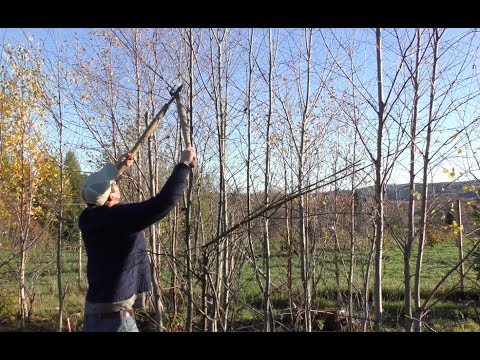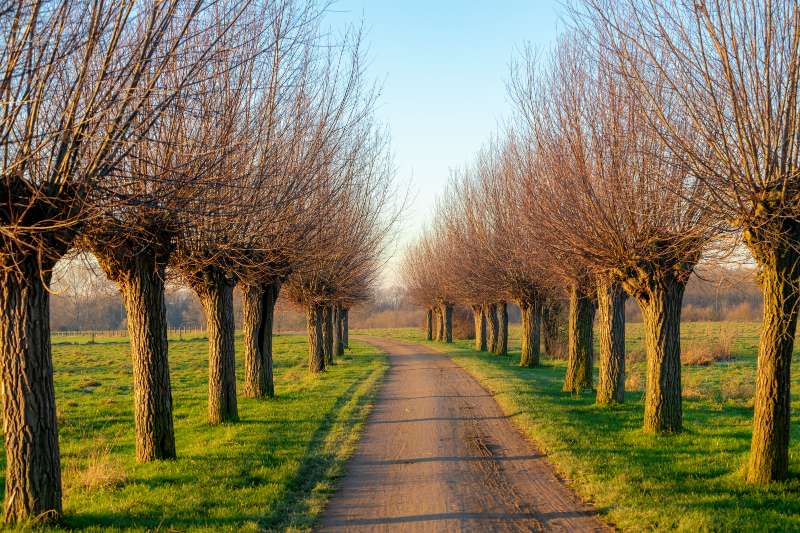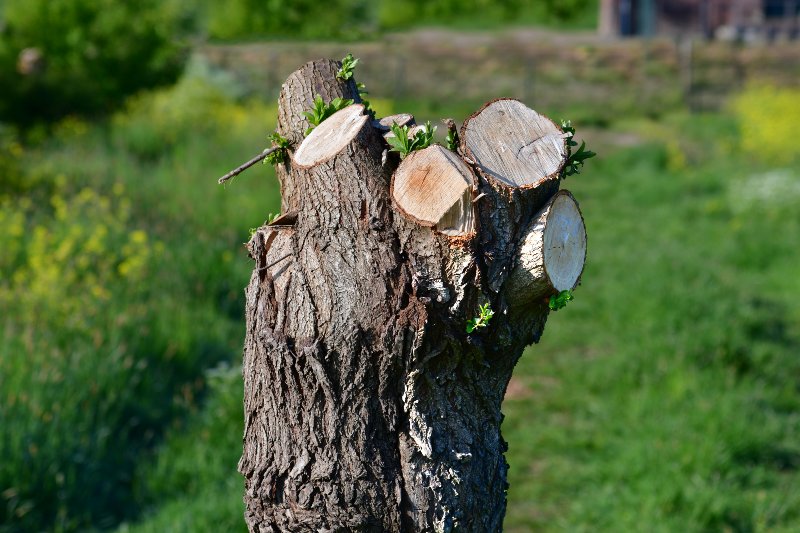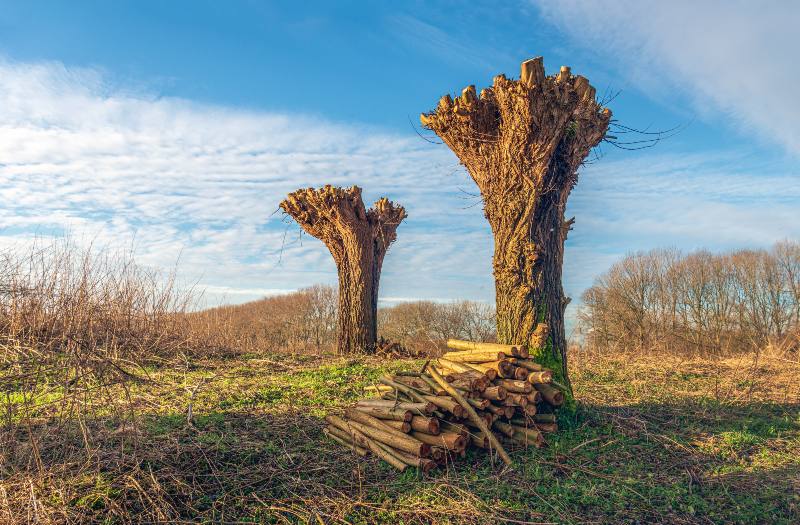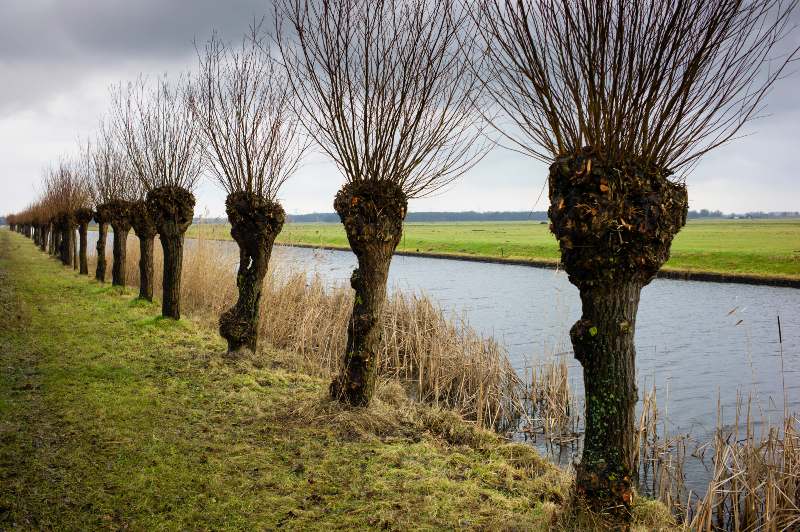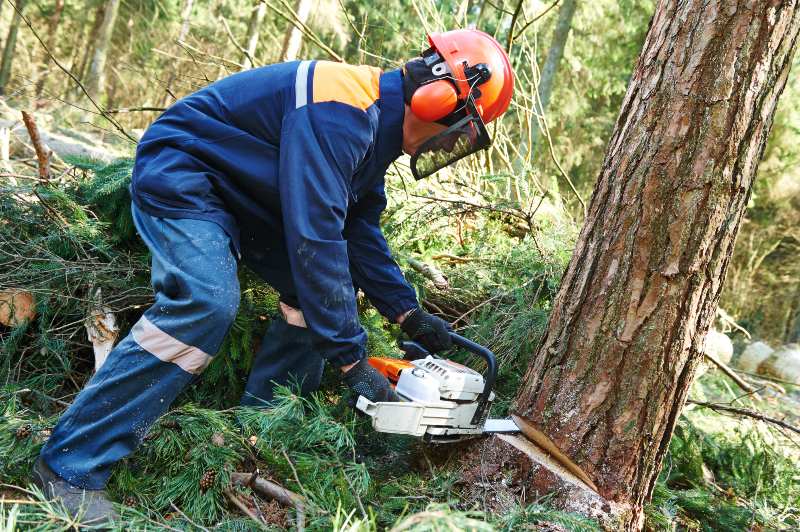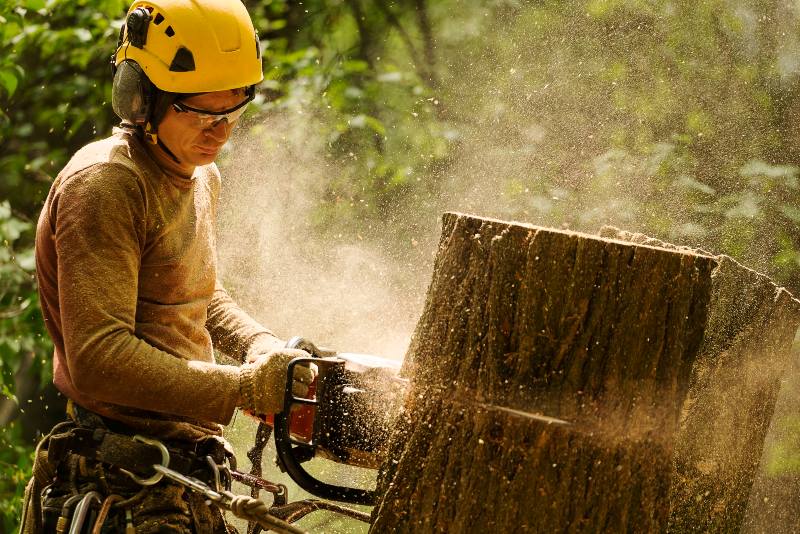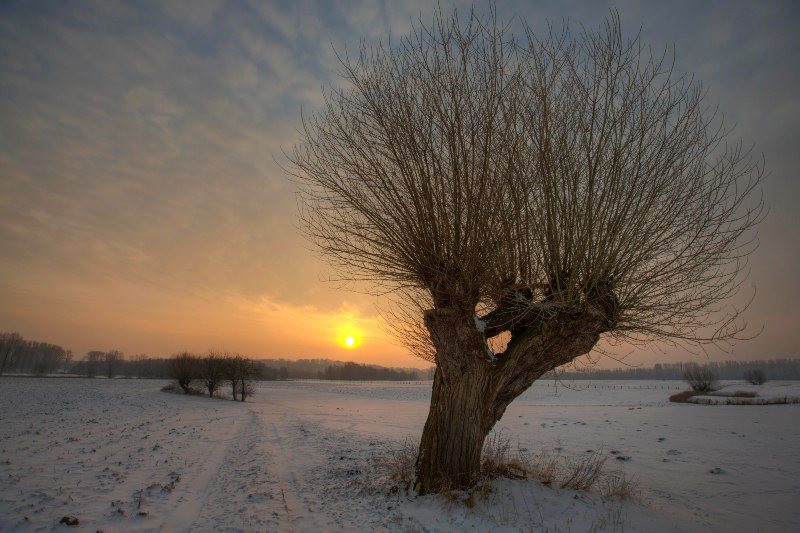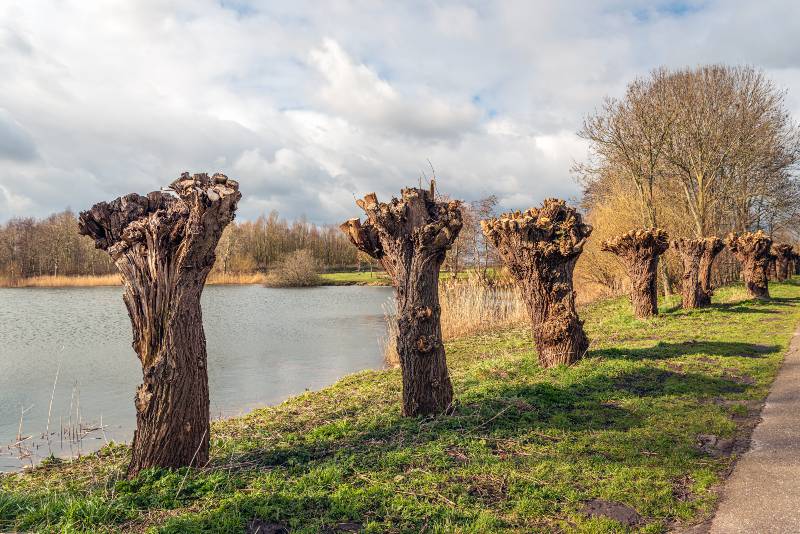Pollarding trees is a pruning and woodland management method that you may use for aesthetic and survival purposes. This technique may result in “lollipop trees”, and it can also provide you with a wood supply.
Continue reading to learn more about pollarding trees.
Everything You Need to Know About Pollarding Trees
What Is Pollarding?
Did you know that the word “poll” originally referred to a person’s head? This is why “to poll” used to be a phrase that meant “to crop the hair”.
Pollarding refers to a tree and woodland management system that encourages the removal of the tree’s upper branches. The process involves cutting back of a tree nearly to its trunk. This keeps the plants smaller than their natural size and shape.
As the pollarded tree grows, a dense mass of branches or foliage appears on the tree’s top and sides. This makes the tree look somewhat swollen or expanded.
However, once you begin the pollarding process, you have to regularly maintain the same height of the tree by pruning.
What Is the Purpose of Pollarding Trees?
Traditionally, this method was typically practiced in Europe way back the medieval times primarily for two reasons:
- to provide grazing animals with pollard hay
- to produce wood pollards
Nowadays, this technique takes place globally to maintain trees at a certain height, which is mainly for ornamental purposes.
But pollarding trees also provide abundant shade in agroforestry systems.
Other practical purposes of pollarding trees include:
- creating bold foliage
- limiting the top growth of trees
- preventing trees from growing out of their bounds or their allotted space
- keeping trees planted in parks or on streets more compact
- growing trees in an urban environment where they can be placed under utility lines and street lights without tangling them
Pollarding trees also provides a way to use wood from the same tree for several years. With this, you do not have to cut down the tree and have only one-time use of its wood.
Additionally, pollarding trees still creates a yearly harvest of branches that you can use for:
- fuel
- boat construction
- fencing
- baskets
Is Pollarding Good for Trees?
Yes! Since pollarding involves period cutting, it makes trees live longer.
Pollarding decreases the growth rate of trees, and it keeps them in a juvenile stage. This is why with pollarding, trees can reach greater ages. This results in many trees surviving as ancient or veteran trees.
In addition, the age of pollarded trees is actually older than how they look. This means that you can’t accurately tell their age using their girth, just like what you would do with normal trees.
Is Pollarding the Same as Coppicing?
Pollarding trees and coppicing are both pruning techniques that you may use on different tree species. You may use these methods to create young stems and bold leaves.
Coppicing is a traditional method that produces strong stems. This process involves cutting trees to almost ground level.
Pollarding trees is like coppicing. But in this technique, trees are cut to their stump, around two meters or six feet above the ground.
Both pollarding trees and coppicing produce stems and shoots that you may use for:
- building
- fencing
- fuel
However, pollarding trees used to be the preferred method over coppicing when it comes to grazed areas or wood pastures.
This is because coppicing was a problem for those who work in the woods who also owned farm animals.
Since coppicing involves cutting of trees to near ground level, the new shoots would grow up to the same level of the pasture. So woodsmen opted to pollard the trees instead. This way, the trees would grow to a height away from browsing and hungry animals.
RELATED: Simple & Easy Tree Identification Guide
How Is Pollarding Done?
Once a tree has reached a certain height, you may start to pollard it.
Cut any lower limbs as well as crossing limbs on the tree. Preferably, leave a trunk to support three to five branches. Then, cut these branches as well to your desired length. These branches will be the ones to form a framework.
After trimming, the tree must look like a barren stick. But do not worry. New shoots will soon appear at the end of the branches, and a crown or “pollard head” will also form.
You must repeat the cutting process every few years to maintain the shape of the trees. However, the frequency of trimming depends on why you are pollarding.
If you want to keep a landscaping design or diminish the size of your trees, you need to pollard every two years. Meanwhile, if you need to have a sustainable firewood supply, pollard trees every five years.
But if the pollarded tree has already overgrown, we recommend that you consult an arborist before cutting the tree.
This is because an overgrown pollard tree may develop heavy branches. Additionally, it may suffer from overcrowding and diseases because of increased humidity. Therefore, it needs to undergo surgery to eliminate its large parts.
Alternatively, you may do the following to repair a pollarded tree:
- Get rid of weak and skinny branches.
- Try to reduce the length of branches to somehow restore the pollarded tree to a normal tree.
- Some tree species, such as the London plane, respond to a treatment wherein you cut all the branches that grew from the old tree stump.
- On the other hand, oak, ash, and hornbeam trees do best when you retain considerable parts of their main branches.
Keep in mind that when you do major work on your trees, closely monitor them to determine if they require further maintenance.
Pro Tip: Always pick young trees for pollarding because they regrow better and faster than older trees.
What Is the Best Time to Pollard Trees?
You have to pollard a tree while it is dormant. This means that you need to undertake pollarding from January to March or late winter to early spring.
In addition, fungal infections, as well as insects, are minimal when it is cold. This can keep the trees less susceptible to diseases.
But there are some exceptions.
For instance, walnut trees are best pollarded in July. In addition, summer is most suitable for pollarding maple trees.
However, the growth of new shoots of these trees during this time may be poor due to drought or scorch.
Which Trees Can Be Pollarded?
Not all trees are good candidates for pollarding. But the types of trees which can be successfully pruned are the following:
- Oak
- Chestnut
- Catalpa
- Sycamore
- Plane
- Black locust
- Hornbeam
- Ash
- Willow
- Yew
- Tulip
- Lime
- Beech
- Mulberry
- Elm
Check out this video by Richard Perkins to learn about pollarding young forests:
Pollarding trees can be beneficial to your garden for a variety of reasons.
This method can prevent trees from outgrowing their allotted space. It may also be necessary for urban areas where trees may obstruct wires, cables, and other private properties.
But more importantly, this technique allows you to continually harvest wood for your survival and provide food for your livestock.


